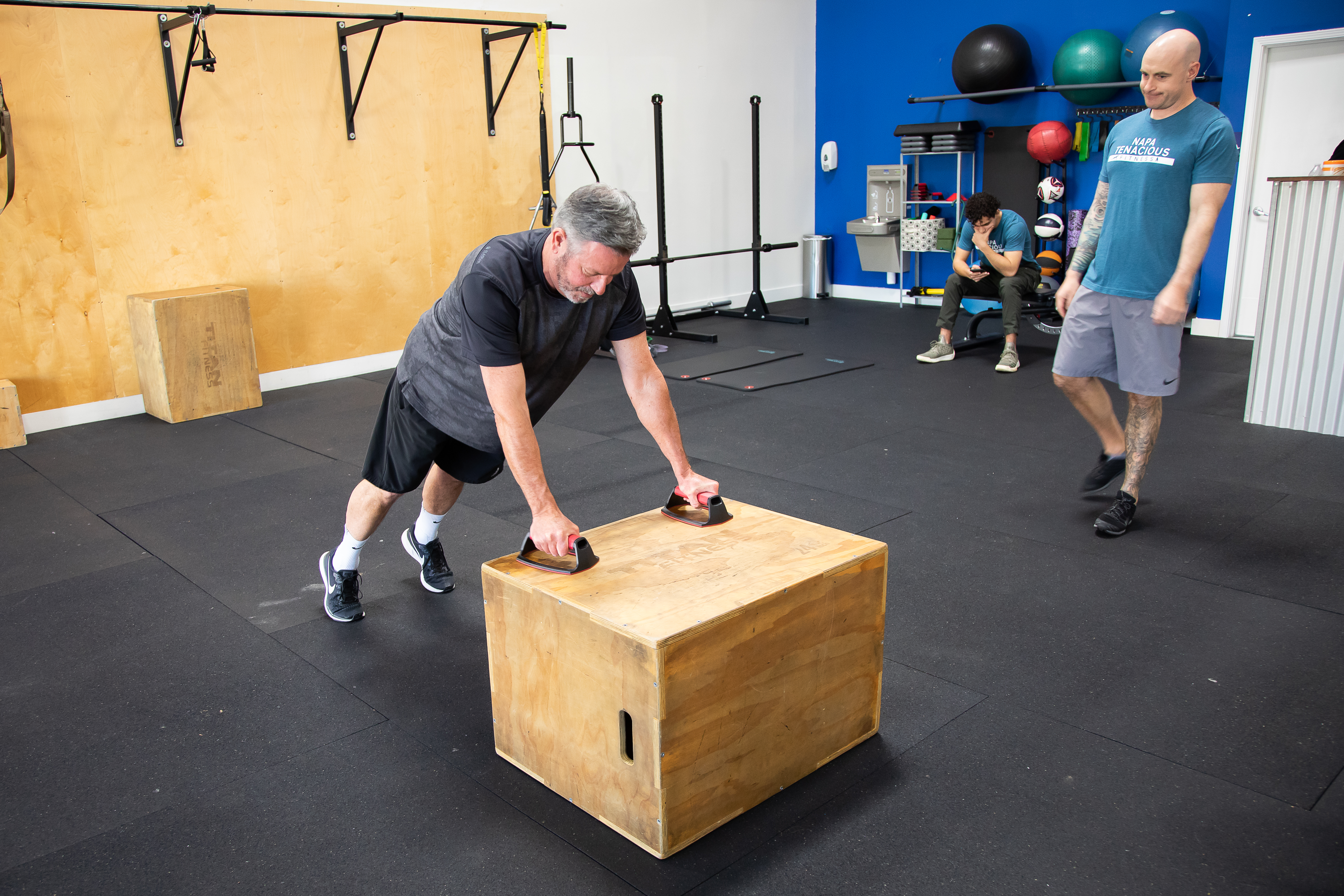A few themes in life slow our progress throughout our fitness journey. Common obstacles compromising our adherence to physical activity are lack of time and distractions to our focus. Long weeks of traveling for work, making sure “little Johnny” gets to his soccer practice, or finishing a landscaping project at home require significant time and energy. Chronic pain symptoms from previous injuries or recovering from an illness can engulf our mental capacity. These events are mentally draining. Lack of time and mental fatigue can impede gym visits or attending a weekly fitness class.
Research supports regular exercise aids in alleviating chronic pain and positively impacting our quality of life. However, when we simply don’t feel up to it, the very thought of exercises is similar to working an overtime graveyard shift after a full day’s work. Long days at work elicit physical, psychological, and emotional fatigue. Additionally, living with afflictions caused by chronic pain or illness makes exercising challenging.
An exercise tactic that serves as a productive buffer from letting these obstacles steer us away from exercises is to choose exercises with less intensity. Isometric exercise is a simple and effective form of training involving holding one body position under tension for a period of time. A widely understood exercise is the straight arm plank exercise. This exercise is the act of holding the starting position of push up. The body is placed into a shape where the muscles must maintain that shape under the resistance of gravity and remain that shape for a prolonged period. The triceps, pectorals, core, hip, and knee muscles are held in a static position. By performing isometric exercise modes, we can still improve our body’s overall strength. Muscle, nerve, hormone, and emotional adaptions are still acquired after performing isometric exercises. Isometric exercises are less sophisticated and more manageable to perform because they lack mechanical stress on the muscles to contract for various repetitions and require less oxygenated blood delivered from the heart to the working muscles. Hence, it will be less physically demanding.
Below are a few examples of isometric exercises:
Isometric wall squat and sit: Lean up against a wall and slide your back down the wall until muscular engagement is experienced in the glutes, quadriceps, and hamstrings. Once a manageable tension is acquired, hold this position for ten to thirty seconds. To make this exercise more challenging, decrease the angle of your hips to your knees by sliding your back down the wall further toward the ground. For safety, ensure you are on a surface with friction or wear shoes. No one wants their feet to shoot out from underneath them and fall on their butts because they did a wall sit wearing socks.
Isometric wall press: Lean up against a wall and squat slightly to where the knees are bent at about a ten-to-thirty-degree angle. Ensuring the lower back is flat against the wall, press the back of your hands into the wall as if you are trying to “push the wall away from you.” You should experience muscular engagement in your shoulder blades, triceps, and the back of your shoulder rotator cuff. Hold this position for ten to thirty seconds.
Straight arm plank: This “don’t leave home without it” exercise acts as a Swiss army knife that has proven to be a potently productive exercise to any human’s exercise routine. Why? Because any human on the Earth only needs two tools to reap the benefits of this exercise: 1) Their body 2) The ground. To perform the straight arm plank, post your arms straight into the ground underneath your eyebrows and plant the balls of your feet into the ground. Ensure to straighten the knees and keep the spine rigid. You don’t want your back to resemble the bridge Harrison Ford crossed in The Temple of Doom as he was chased by an army of heart-eating villains. While posting in this position, focus on using the abdominal muscles to maintain a rigid spine and the triceps to keep the arms extended. You should feel muscular engagement in the shoulders, triceps, abdominals, and glutes. Hold this position for ten to thirty seconds.
The demands of life impose a significant amount of stress in which our intuition sometimes tells us exercise is probably not the best thing for us. While pushing our bodies past our capabilities isn’t the best-case scenario, we can find forms of exercise of lower intensity to give us the health benefits we need to continue being productive and happy.
Sean McCawley, the founder and owner of Napa Tenacious Fitness in Napa, CA, welcomes questions and comments. Reach him at 707-287-2727, napatenacious@gmail.com, or visit the website napatenaciousfitness.com.

